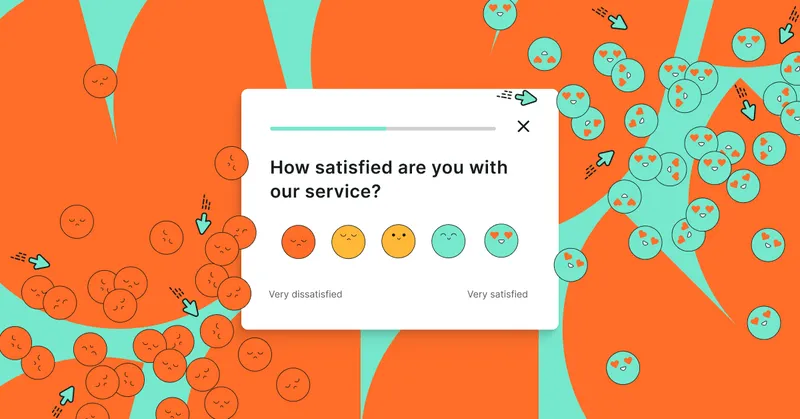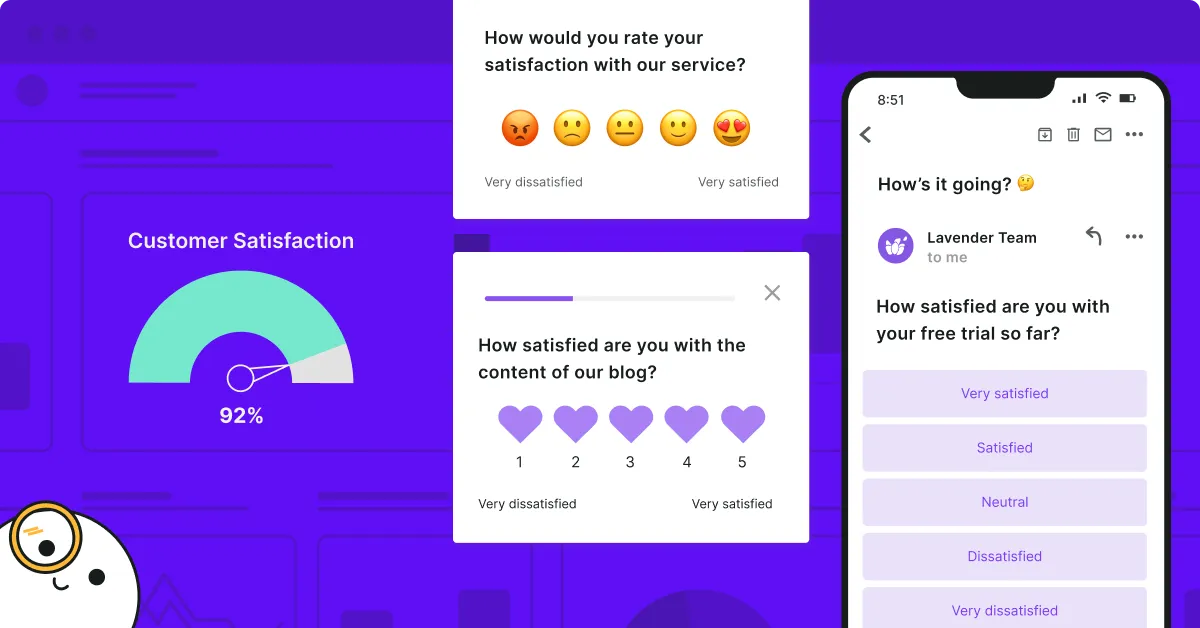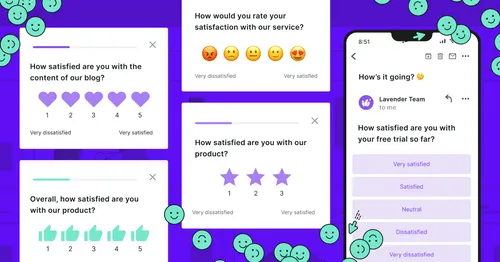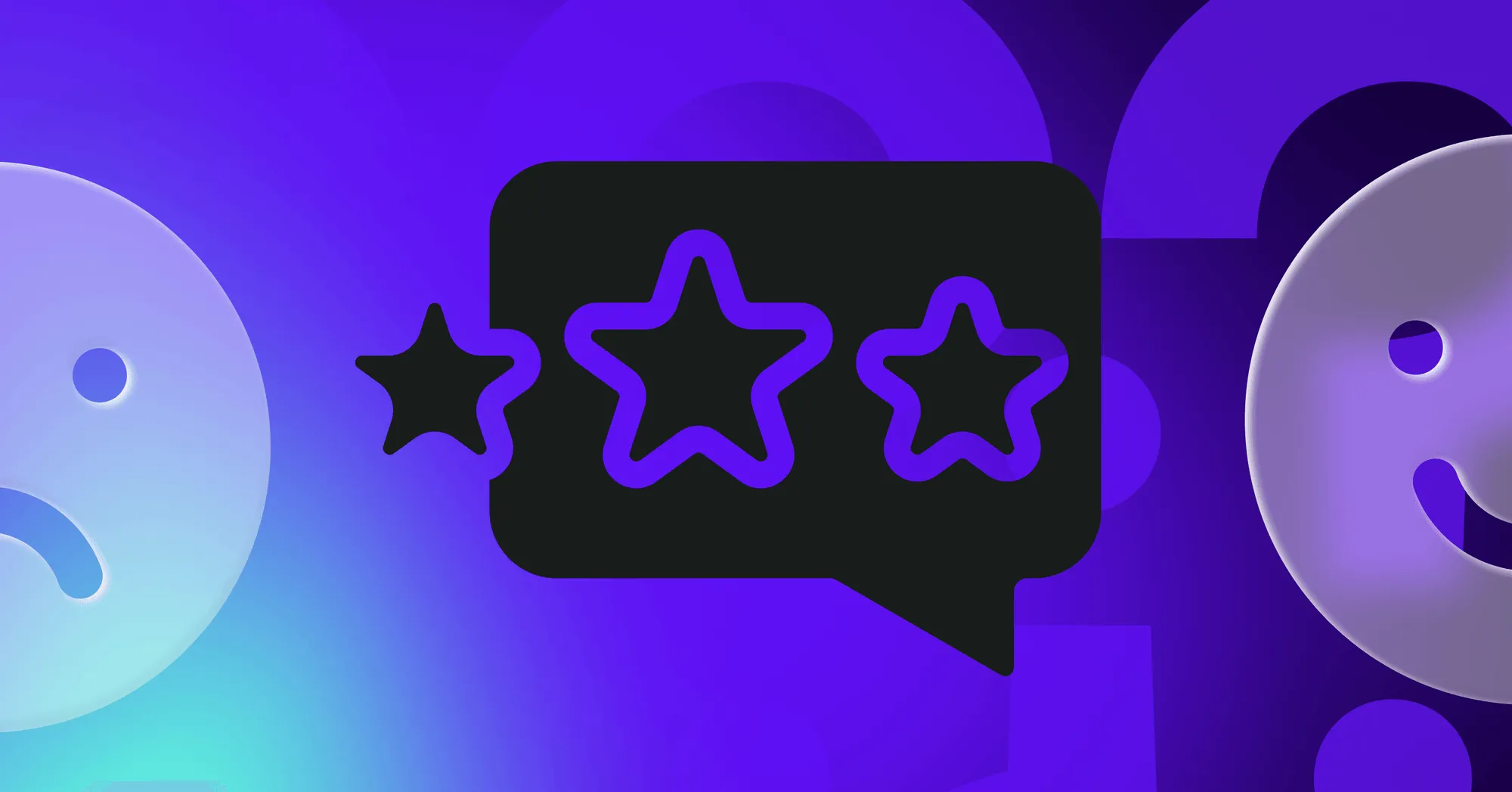For many businesses, it seems like customer expectations are increasing each year. Besides providing a great product, you also need impeccable customer service, a good guarantee, and much more. Does offering all of that really pay off?
The answer is an astounding yes. With superb customer satisfaction also comes customer retention. And since we know that acquiring a new customer is 5 times more expensive than retaining an existing one, it makes sense to put effort into retention.
Today, we’ll find out how customer satisfaction and retention are tied together and what you can do to improve both to keep your existing customers and win new ones.

What are customer satisfaction and customer retention?
Customer satisfaction (CSAT) is a measurement that defines how satisfied your customers are with your product or service. It shows how well you meet your customers’ expectations, not just in terms of what you sell but also in your overall customer retention rate and experience.
CSAT is one of the most important indicators of the overall health of a business. You can use different ways to measure it, but the most popular one is CSAT surveys. And if you’re thinking of using one, you can try our CSAT survey template for a quick start.
Customer retention measures how loyal customers are to your brand and how good you are at retaining the customers that you’ve acquired. Naturally, you want to retain as many customers as possible to keep your business healthy. Getting new happy customers is an admirable goal, but making sure the existing ones are satisfied is just as important.
Customer retention is usually calculated through the customer retention rate or customer churn. Here is a handy formula for calculating customer churn.

You want to keep your churn rate as low as possible as it would mean that you’re gaining and retaining more loyal customers than losing them. If your annual churn rate is anywhere between 5-7%, you’re doing a solid job with your customer retention strategies.
Another metric closely tied to customer retention is the customer lifetime value (LTV). This is the total amount of money your customers spend with you before churning. Naturally, you want this number to be as high as possible.
How to measure customer satisfaction with surveys
There are many ways to measure customer satisfaction. And while retention is fairly easy to measure through churn, satisfaction can be more complex compared to just retaining customers. If you take too long to measure customer satisfaction, your churn might start skyrocketing before you know it.
To avoid this problem, you should use CSAT surveys, such as the ones offered by Survicate, very early on. Here are some reasons why:
- They offer a quick way to gather quantitative feedback
- They are easy to compare across the customer journey and work towards better customer retention
- They are the industry-standard KPI that you can weigh against other companies
Perhaps the biggest benefit of CSAT surveys is that you can use them with different platforms, including live chat, email, website, and mobile apps.
The correlation between customer satisfaction and retention
Research shows that 81% of satisfied customers are more likely to spend money with you again if they have a positive experience. As many as 95% of dissatisfied customers will take some action after having a negative experience with your brand. This can be anything from complaining to their mom to posting a rant about you on Reddit.
If customers are satisfied with your product, they will generally stick around. However, there are some exceptions to the rule.
Customers are satisfied but still leaving
Your CSAT scores are through the roof, you offer an amazing experience, and yet, customers are leaving. Your customer retention is doing poorly and looking at your churn rate makes you sadder than a kid on a Sunday evening before school.
There are cases when you can have good customer satisfaction but your customer retention remains poor.
- Your product no longer meets your customers’ demands. If you offer an invoicing app and your customers are generally thrilled with it, they may suddenly develop a need for more elaborate invoicing software. Your product does the job, but another tool offers a wider range of options.
- Your product is amazing but your customer service is far from it. If you have a great product, customers will keep using it but they will part ways with you once they encounter poor customer service.
- Your customers’ businesses changed in a way that is outside of your control. They could have had major budget cuts, a loss of employees, or a merger. Despite being excited about your product, someone made the call to move on without it.
Customers are not satisfied but they are staying
There’s a chance that your customers are not very happy with your product or service but they decide to stay. Don’t be surprised as this is a common situation in business and there could be several potential reasons for this.
- Your customers are locked into lengthy contracts. If they paid for an annual plan or a lifetime deal, they cannot just opt out of the agreement.
- Switching to a competitor takes too much effort, time, and money. If you have a highly technical product and switching to a competitor means months of work and thousands of dollars spent, your customers might stay even if there is a better, more cost-effective alternative.
- You have weak or non-existent competition. Even though it would be rare, there could just be no competitors offering the same product to the same type of audience as you do. Even if your customers wanted to leave, they would have no other option.
So, is there a correlation after all?
When reading the scenarios above, you may feel like there is no rhyme or reason for customer satisfaction and retention. However, these are exceptions rather than rules, and you should strive to make your customers more satisfied so you can retain as many of them as possible.
While you cannot control the global economy, your customers’ business success, or what your competitors do, you can definitely control what kind of experience your customers have with your product.
How to improve customer satisfaction and retention
Now that we know that satisfied customers are more likely to stay, let’s figure out a few ways to make your customers happier.
- Keep your finger on the pulse at all times
Religiously monitor your customer satisfaction scores to ensure you’re not losing customers somewhere along their journey. There are more ways to stay on top of their feedback, including other metrics such as the Net Promoter Score (NPS), the Customer Effort Score (CES), and the customer health score. Don’t measure once and forget about it—make it a habit. You can also use micro surveys at several touchpoint to monitor user experience across your website and product.
- Improve your customer experience
If you constantly measure all your CX metrics, you can easily spot where things are going wrong. In an age where competing based on features and pricing is becoming increasingly difficult, customer experience may be the key to improving customer satisfaction.
- Personalize the experience
Don’t know where to get started with improvements? Personalization is key. Customers who receive a personalized experience are 49% more likely to make impulse purchasing decisions. Some examples of personalization include email list segmentation, personalized product recommendations, and guided product tours.
- Act on your customer feedback
You can use different methods to capture feedback from your customers. For example, you can run feedback surveys in Survicate using more than 100 survey templates. When urgent or sensitive feedback requires extra attention, you can use an AI meeting note taker that will record the discussion in real-time, helping the client feel heard. But walking the walk is what matters. Make it a point to act on the customer feedback you get and actually implement the feedback your customers provide you with.
- Use an omnichannel customer service approach
Your customers use a wide variety of channels to get in touch with you. These include your website, live chat, email, social media, and phone. Make sure to use customer service software that connects all of these interactions into one central hub.
- Respond to customer reviews
Leaving a product or service review nowadays has become as easy as adding a new post on Instagram. As customer reviews come in, acknowledge and react to them, whether they’re positive or negative. You want to foster relationships with your existing customers and encourage others to leave their reviews so that, in the long run, you can improve your customer satisfaction and retention.
- Improve your product or service
Sometimes, just improving your product or service is all you need to boost your customer satisfaction. Whether this means adding new features, fixing bugs, or anything else, follow your users’ feedback when determining what you should improve.
- Introduce a loyalty program
Your most faithful customers need to know that you appreciate them being around through thick and thin. You can introduce a customer loyalty program and offer them a few perks that regular customers cannot use, such as new features in a beta version, discounts, special offers, and company-branded merchandise.
- Offer self-help options to customers
Many customers, especially the younger generations, prefer solving a problem on their own before getting in touch with you. To support them, offer tutorials, knowledge bases, how-to blog posts, videos, walkthroughs, FAQs, and anything else that can help them figure out a solution on their own before picking up the phone or writing an email to you.
- Shorten your first response time
When customers reach out to you, they have certain expectations on how long it should take for someone to get back to them. If it’s an email, make sure to respond within 24 hours. When it comes to phone calls, aim for three minutes. Swift communication is one of the keys to retaining satisfied customers effectively.

The first step towards improved customer satisfaction and retention
Instinctively, we all know that making your customers more satisfied is key to unlocking new business growth. However, it can sometimes be difficult to tie customer satisfaction to larger goals, such as increased revenue or better customer retention. In this article, we explained why customer satisfaction matters and how directly it’s linked to retention metrics, repeat purchases, and a more positive experience with your brand.
The best way to start improving your customer satisfaction is to listen to what your customers have to say. In other words, collecting their feedback. With Survicate, you can collect customer feedback across different touchpoints, and it takes just a few minutes to get started. Sign up for your 10-day free trial today!
Also, you can foster your decision making checking our newest ranking of best customer satisfaction tools.













.svg)

.svg)



